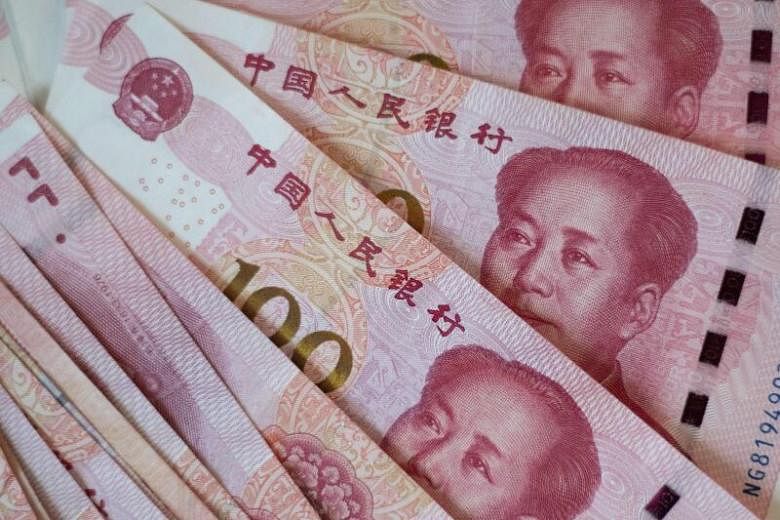SHANGHAI (REUTERS) - The yuan hovered at a more than 7½-month low against the dollar on Monday (May 25), following the weakest midpoint fixing since the 2008 global financial crisis and heightened Sino-US tensions.
Sentiment soured after Beijing proposed a new national security law for Hong Kong on Friday, and tensions intensified over the weekend as White House National Security Adviser Robert O'Brien said China's move could lead to United States sanctions and threaten the city's status as a financial hub.
"The current turbulent situation between China and the United States is unlikely to change in the short term, so the yuan could face increasing downside pressure in the mid to long term," analysts at China Construction Bank (Asia) said in a note.
They noted spot yuan was likely to trade narrowly for now as Beijing is holding its annual gathering of parliament.
The onshore yuan opened at 7.1335 per US dollar and was changing hands at 7.1383 at midday, 73 pips weaker than the previous late session close.
The spot yuan eased to a low of 7.1420 per US dollar at one point in morning trade, not far from Friday's intraday low of 7.1446, the weakest since Oct 9, 2019.
Prior to market opening, the People's Bank of China (PBOC)lowered its official yuan midpoint to 7.1209 yuan per US dollar, 270 pips, or 0.38 per cent, weaker than the previous fix of 7.0939.
It was the weakest level since Feb 28, 2008.
Some traders said the fixing was in line with their projections and piled some pressure on the yuan.
A trader at a Chinese bank said investors were unwilling to test lows in the spot market as they were concerned that state banks would step in to prop up the currency.
Major state-owned banks are believed to often act on behalf of the PBOC in the currency market.
UBS chief China economist Wang Tao said given the Sino- US Phase 1 trade deal was still being implemented, the yuan could trade around the key 7 per US dollar mark this year.
"Market sentiment could be affected but the yuan is unlikely to have a huge depreciation," she said, noting restrictions on overseas travel resulting from the coronavirus pandemic has limited household demand for dollars and supported the country's current account surplus.
Ms Wang added that a wider yield gap between China and the United States had also attracted foreign capital into China's bond market to support the yuan.
The global dollar index rose to 99.851 at midday from the previous close of 99.727. The offshore yuan was trading at 7.1528 per US dollar as of midday.

